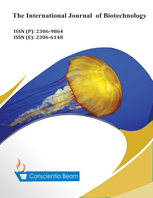Influence of Potassium and Boron on Some Traits in Wheat (Triticum Aestivum Cv. Darab2)
Abstract
The boron element is unique among the essential elements in that a narrow range in concentration can mean the difference between plant deficiency and plant toxicity. Effect of potassium on boron toxicity reduction in wheat was evaluated at Agriculture Research Station located in Jahrom, Iran, during 2009. An experiment was conducted in a factorial experiment based on Completely Randomized Design (CRD) in three replications. The treatments were four levels of B (0, 20, 40 and 60 mg) and four levels of K (0, 25, 50 and 75 mg). The studied traits were number of spikes plant -1, number of kernels spike-1, 1000 seed weight, biological yield, harvest index and seed yield. The results demonstrated that all of traits except biological yield were increased when K element was applied. On the other hand, all of traits were decreased when B levels were increased. It seems to be that soils containing higher boron concentration were considered to probably cause B toxicity. B1 × K4 and B4 × K1 interaction effects had the highest and lowest seed yield (8.92 and 1.15 ton ha-1, respectively), indicating that K promotes photosynthesis and transport assimilates of carbohydrates to the storages organs. In this research, 1000 seed weight had the highest correlation with seed yield.

